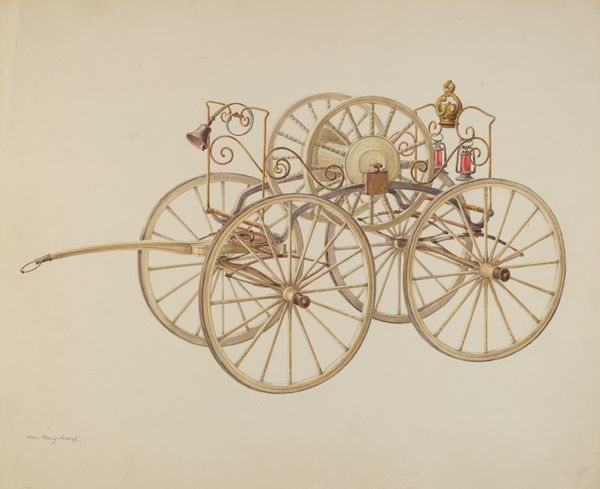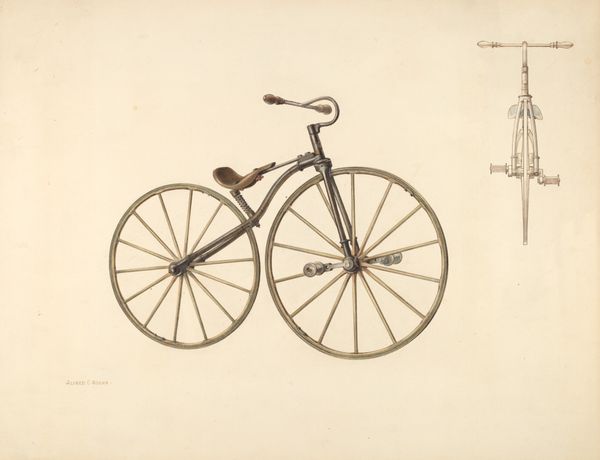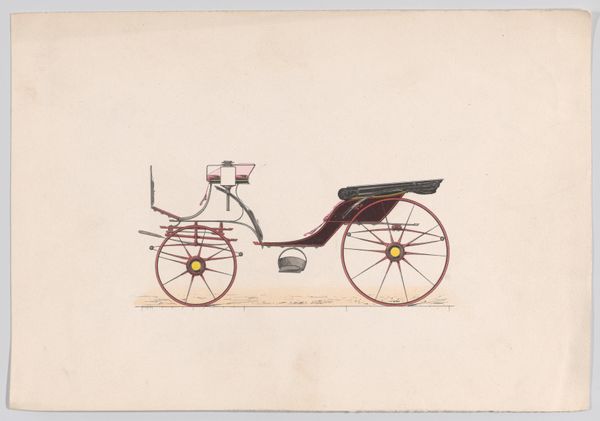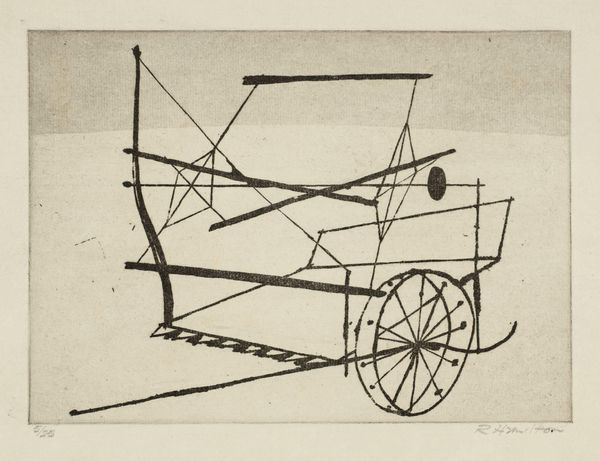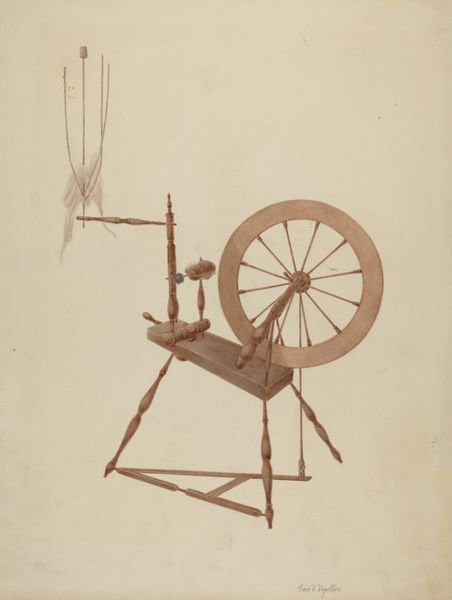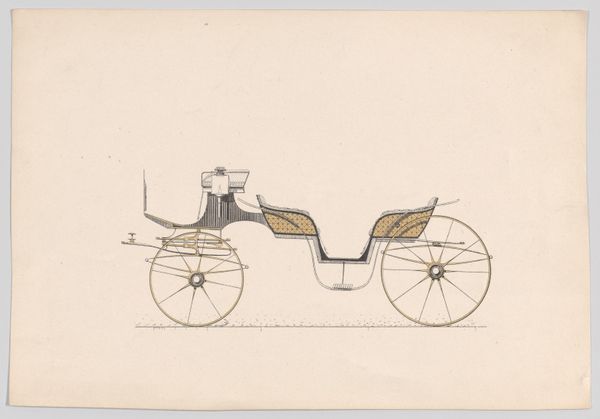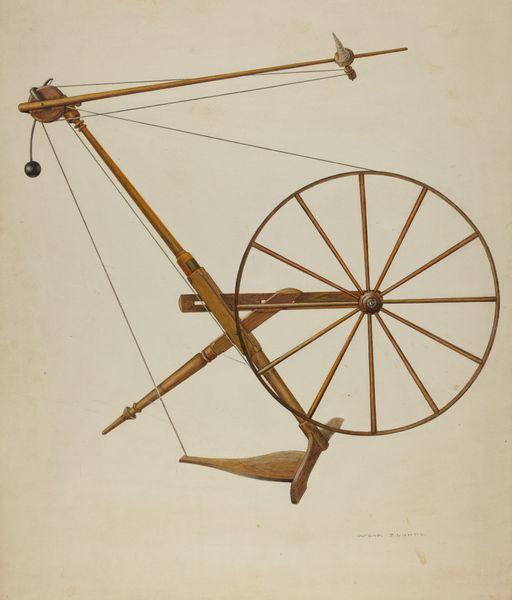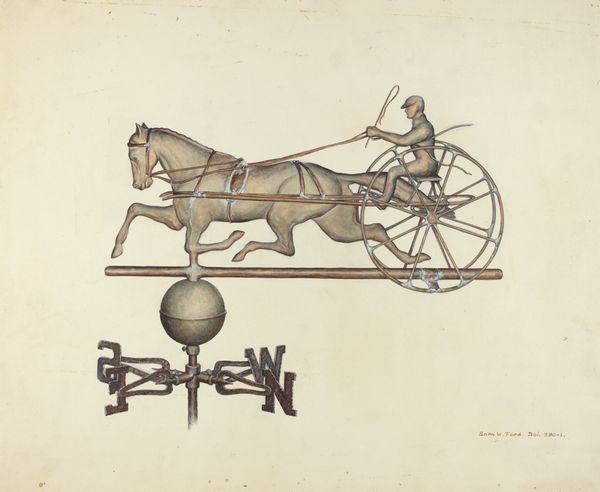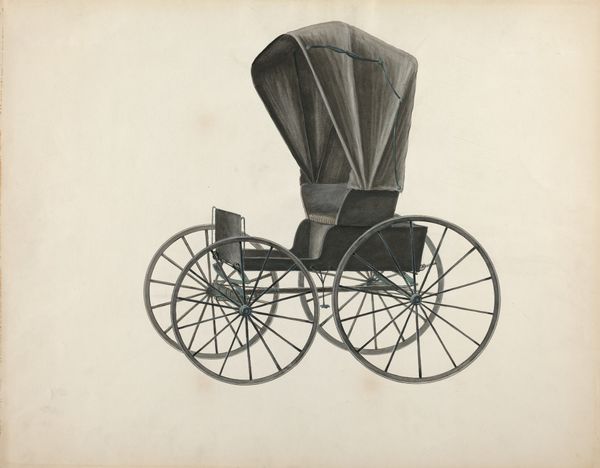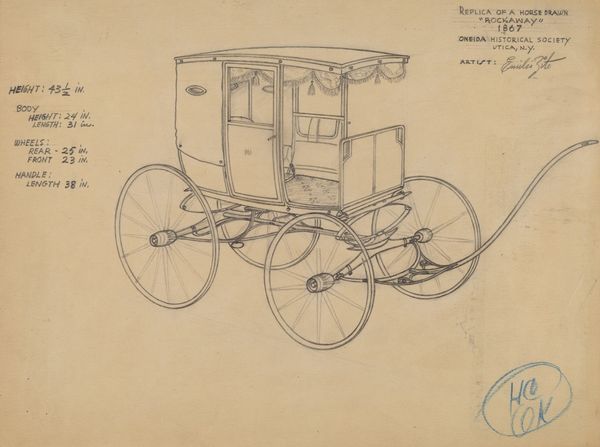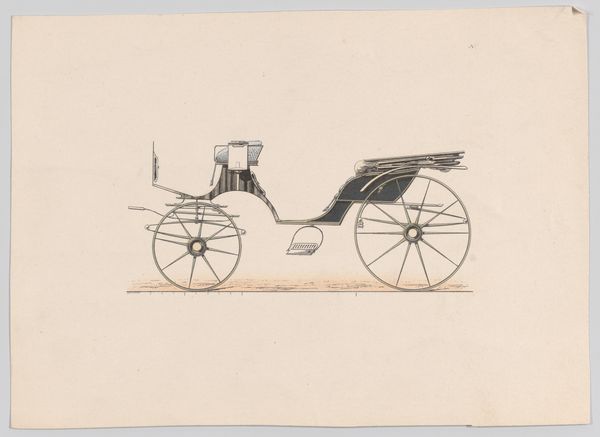
drawing, pencil
#
pencil drawn
#
drawing
#
aged paper
#
toned paper
#
light pencil work
#
pencil sketch
#
old engraving style
#
personal sketchbook
#
geometric
#
pencil
#
ink colored
#
line
#
sketchbook drawing
#
pencil work
Dimensions: overall: 22.4 x 29 cm (8 13/16 x 11 7/16 in.) Original IAD Object: rear wheel: 41 3/4" high; front wheel: 16" high; axel: 40" long
Copyright: National Gallery of Art: CC0 1.0
Curator: So, here we have Harry G. Aberdeen's "Bicycle," a pencil drawing from around 1936. What's your first impression? Editor: It looks like something out of a Jules Verne novel! All those precisely rendered spokes, the high seat... I immediately imagine some Victorian inventor tooling around in it. Is that aged paper, or just the effect of the pencil? Curator: The paper itself is toned with age. Aberdeen has captured intricate mechanical detail using what looks like very light pencil work. There's an inscription noting the scale—1 inch to 7—hinting at a technical drawing purpose. Editor: Right! It does feel like a blueprint, but then there's that delicate shading that lends it an almost dreamlike quality. A practical vision perhaps. Does knowing the social context give it even more dimension? Curator: Absolutely. In the 1930s, the bicycle was undergoing a cultural transformation—moving from a purely functional object to one of leisure and even social mobility. These designs are more focused on function over industrial appearance. They provide a detailed drawing intended for use as a manufacturing reference. Editor: Like a window into both the possible, and what might have never came to be. It strikes me how even a simple pencil drawing, seemingly detached from high art, speaks to invention and accessibility. One imagines all that beautiful line-work hinting at speed. Do we know much about the person who sketched this piece of beautiful engineering? Curator: Sadly, there isn't abundant biographical data on Aberdeen, beyond a handful of similar sketches in the collection. It is this drawing's relative ambiguity, though, that grants us freedom to consider its purpose—both personal and potential manufacturing design plans. It serves to open broader questions on design and transit history of the moment, more generally. Editor: That is definitely what the piece evokes. The intersection of intention and dream and industrial planning on one aged sheet. Well, that makes you look at everyday transportation in a very different light. Thanks for shining some historical context, and consideration, onto a sketch and this design’s place within history!
Comments
No comments
Be the first to comment and join the conversation on the ultimate creative platform.
